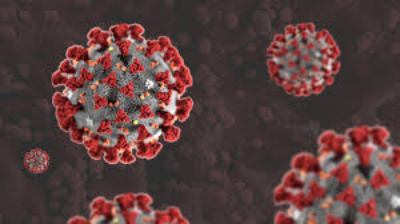Dr. Alejandro Berrio, a researcher at Duke University claimed that his team has found a number of silent mutations in the genome of SARS-CoV-2 that explain how the virus jumped from animals to humans and spread so quickly. SARS-CoV-2 was first officially reported on December 31, 2019, when the WHO China Country office was informed about cases of Coronavirus Diseases in Wuhan. And, as per unpublicized reports, the first case was traced back to a 55-year-old person in Hubei province, in November 17, 2019.
The family of Coronaviruses (CoVs), which is recently in news, are common pathogens of respiratory, hepatic, gastrointestinal, and central nervous system diseases of humans and animals. Bats are natural carriers of coronaviruses and the viruses may be transmitted from animals to humans. Examples include Severe Acute Respiratory Syndrome Coronavirus (SARS-CoV) and Middle East Respiratory Syndrome Coronavirus (MERS-CoV). The Coronaviruses are important pathogens that place a threat on the human health and the economy. Coronavirinae subfamily is classified into four genera, including Alphacoronavirus, Betacoronavirus, Gammacoronavirus, and Deltacoronavirus. Antigenic relationship was the original basis of this classification. It was later confirmed by sequence comparisons of entire viral genomes. Coronaviruses are enveloped, positive-sense single-stranded RNA viruses. The two-thirds of the coronaviral genome at 5′-terminal end contains a large open reading frame (ORF), ORF1ab, which encodes polyprotein 1a (pp1a) and polyprotein 1ab (pp1ab), the latter being generated via a−1 ribosomal frameshift.
Silent mutations which are recently in news in relation to Covid19 are changes in the DNA (nucleotide) sequence of an organism that do not cause a visible change in the organism. Such silent mutations do not result in a change in the amino acid or the overall function of the protein (whose codes get mutated). A very basic example can be different codons coding for the same amino acid. The findings of the study on the silent mutations were published in the Peer J journal on October 16 2020. The earliest evidences suggest that SARS-COV-2, much like other coronaviruses in circulation had spread from bats to humans. The SARS-CoV-2 had specifically jumped through pangolins to humans after originating from bats. However, unlike other viral strains, SARS-COV-2 was able to replicate inside humans in a much more efficient manner. The study was based on the SARS-COV-2 genome with around 30,000 letters of genetic code which allowed the virus to replicate and transcribe copies of RNAs for its proteins.
Earlier, researchers had also discovered the presence of a much more infectious COVID strain, D614G, which was responsible for creating clusters of infections in geographically far-off places. D614G indicates a substitution of the amino acid Aspartic Acid represented by D with the amino acid Glycine (G) at the 614th codon site in the genome.
Researchers led by Bette Korber had presented compelling data that in the SARS CoV-2 virus’s spike protein, the amino acid change represented by D614G, emerged early during the pandemic. The data also suggests that the viruses containing G614 are now dominant in many places around the world. The crucial questions which came out of Korber’s studies are whether this is the result of natural selection and what does it mean for the COVID-19 pandemic on an overall scale. For viruses like SARS-CoV-2, transmission really is everything. It is the key to their survival. If the viruses do not get into another host their lineage ends. The rapid spread of G614 was because it is more infectious than D614 as hypothesized by the group led by Bette Korber. Evidence was provided in support of the hypothesis that clinical samples from G614 infection cases have higher levels of viral-RNA and produced higher titers in pseudo-viruses from in vitro experiments.
Two other regions of the SARS-CoV-2 genome were identified to pinpoint on other mutations that were more subtle. The regions are Nsp4 and Nsp16. These mutations appear to have given the virus a biological edge over previous strains without altering the proteins they encode. The silent mutations in the Nsp4 and Nsp16 change the folding pattern of the RNAs coded by these regions in the genome. These RNAs are produced at an earlier stage in the infection, as among the first RNAs even before the coding of Spike proteins for the packaging of virion materials. Hence, these mutations are crucial in the spreading of the virus even before the people are aware that they are infected, which is a major difference from the 2003-SARS outbreak.
The 5′ cap structures of eukaryotic mRNAs are important for stability of the RNA and for the process of protein translation. A study done by a group of researchers led by Yi Wang, published in the Journal of Virology found out that Coronavirus nsp10/nsp16 Methyl-transferase can be targeted by nsp10-derived peptide in vitro and in vivo to reduce replication and pathogenesis.
These Viruses are constantly mutating and evolving as stated by Dr Berrio in a press release, explaining the importance of the findings. He also added that it is possible that a new strain of coronavirus capable of infecting other animals may come along which in itself also has the potential to spread to people, like SARS-CoV-2 did.
Adding a precautionary note, scientists including Dr. Berrio have also asserted that the recent discovery of silent mutations should be treated with caution, suggesting that coronaviruses could continue to spread in humans, and mutate around in different forms.
The author is a student member of Amity Centre of Happiness.
Editor Opinion, Biswarup Mukhopadhyay has given important inputs for the article.





